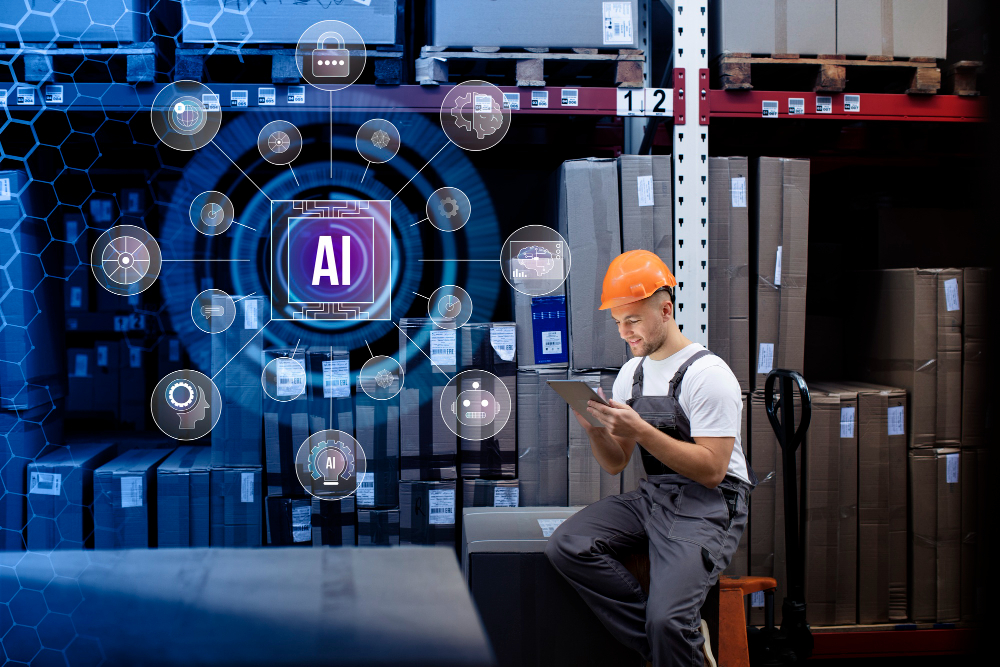Artificial intelligence (AI) is no longer a futuristic fantasy; it’s woven into the fabric of our daily lives, silently powering everything from our smartphones to healthcare diagnostics. 2024 promises even more exciting advancements, with AI tools becoming increasingly sophisticated and accessible. But with so many options, choosing the right ones can be overwhelming.
Fear not, fellow AI enthusiasts! This blog post delves into the most useful AI tools in 2024, categorized by their purpose. Whether you’re a seasoned developer or a curious individual, there’s something for everyone.
AI for Everyday Life: Seamless Integration and Convenience
1. Voice Assistants:
Our trusty companions, Alexa, Siri, and Google Assistant, are constantly evolving. They seamlessly manage schedules, control smart home devices, order groceries, and even provide personalized entertainment recommendations.
2. Language Translation Apps:
Break down language barriers effortlessly with tools like Google Translate and Microsoft Translator. Real-time translation of text, speech, and even images makes global communication smoother than ever.
3. AI-powered Fitness Trackers:
Elevate your fitness journey with wearables like Fitbit and Garmin. They offer personalized insights, workout recommendations, and sleep tracking powered by AI, helping you reach your health goals effectively.
4. Smart Home Devices:
From Nest thermostats that learn your preferences to self-vacuuming robots like Roomba, AI empowers intelligent home experiences. Enjoy optimized comfort, security, and efficiency with minimal effort.
AI for Business: Boosting Productivity and Efficiency
5. Customer Service Chatbots:
Deliver 24/7 support and answer frequently asked questions with AI-powered chatbots. Tools like Drift and HubSpot offer personalized interactions, improve customer satisfaction, and free up human agents for complex issues.
6. Marketing Automation Platforms:
Streamline your marketing efforts with AI solutions like Pardot and Marketo. Automate tasks, personalize campaigns based on customer data, and gain valuable insights to maximize your marketing ROI.
7. Data Analytics Tools:
Extract meaningful insights from vast datasets with AI-powered analytics platforms like Tableau and Power BI. Uncover hidden trends, predict future outcomes, and make data-driven decisions for informed business strategies.
8. Project Management Software:
Keep your team on track and projects on schedule with AI-powered project management tools like Asana and Trello. AI features like smart task scheduling, resource allocation, and risk management ensure optimal team collaboration and project success.
AI for Creativity: Unleashing Imagination and Breaking Barriers
9. AI-powered Writing Tools:
Generate creative text formats, craft compelling marketing copy, or even write entire blog posts with tools like Jasper and Rytr. These AI assistants help overcome writer’s block and boost your content creation workflow.
10. Design and Image Generation Tools:
Design logos, product mockups, or even unique artwork with AI tools like DALL-E 2 and Midjourney. Explore endless creative possibilities and bring your visual ideas to life, even without design expertise.
11. Music Composition and Remixing Tools:
Compose original music pieces or remix existing tracks with AI-powered tools like Amper Music and MuseNet. Explore new musical styles, experiment with unique soundscapes, and express your artistic vision through AI-assisted composition.
12. Video Editing and Content Creation Tools:
Edit videos, create engaging social media content, or even generate entire explainer videos with AI tools like InVideo and Descript. Enhance your storytelling with AI-powered editing features and save valuable time in content creation.
AI for Developers: Pushing the Boundaries of Innovation
13. OpenAI Gym and DeepMind Lab:
Train and test reinforcement learning algorithms in controlled environments with these popular AI frameworks. Experiment with AI agents in simulations and accelerate your research and development efforts.
14. TensorFlow and PyTorch:
Build and deploy powerful machine learning models with these industry-standard AI libraries. Leverage their flexibility and extensive community support to tackle complex AI challenges.
15. Hugging Face Transformers and spaCy:
Utilize pre-trained language models for natural language processing tasks like text analysis, summarization, and translation. These open-source libraries empower developers to build innovative NLP applications quickly and efficiently.
16. Google Cloud AI Platform and Amazon SageMaker:
Access comprehensive AI services and tools on-demand with these cloud platforms. Train, deploy, and manage AI models with ease, scaling your AI development efforts seamlessly.
The Future of AI: A Collaborative Journey
With the tools already available and exciting advancements on the horizon, the future of AI is indeed bright. However, it’s crucial to remember that AI is a powerful tool, and its development and application must be guided by ethical principles and responsible practices. Let’s embrace the potential of AI while working together to ensure its benefits are shared equitably and sustainably
As we move forward, here are some key trends to watch in the world of AI:
1. Democratization of AI:
Complex AI tools will become increasingly user-friendly, empowering individuals with limited technical expertise to leverage their power. No-code platforms and intuitive interfaces will break down barriers and open up creative and business possibilities for everyone.
2. Explainable AI (XAI):
Building trust in AI requires understanding its decision-making processes. XAI tools will shed light on how AI models arrive at their conclusions, promoting transparency and mitigating potential biases.
3. Fusion of AI and other technologies:
AI will increasingly intersect with other cutting-edge technologies like blockchain, robotics, and the Internet of Things (IoT). This convergence will lead to even more transformative applications across various industries.
4. Responsible AI development:
As AI’s influence grows, ethical considerations become paramount. Responsible AI development principles, focusing on fairness, accountability, and societal well-being, will guide the creation and deployment of AI tools.
5. Human-AI collaboration:
The future lies not in humans being replaced by AI, but in collaborative partnerships. Humans will leverage AI’s strengths for tasks requiring creativity, judgment, and empathy, while AI automates repetitive processes and provides data-driven insights.
By embracing these trends and fostering responsible development, we can ensure AI becomes a force for positive change, empowering individuals, businesses, and society as a whole.
Remember: This is just a glimpse into the vast and exciting world of AI tools. As you explore further, don’t hesitate to experiment, discover new possibilities, and contribute to shaping the future of AI responsibly.

